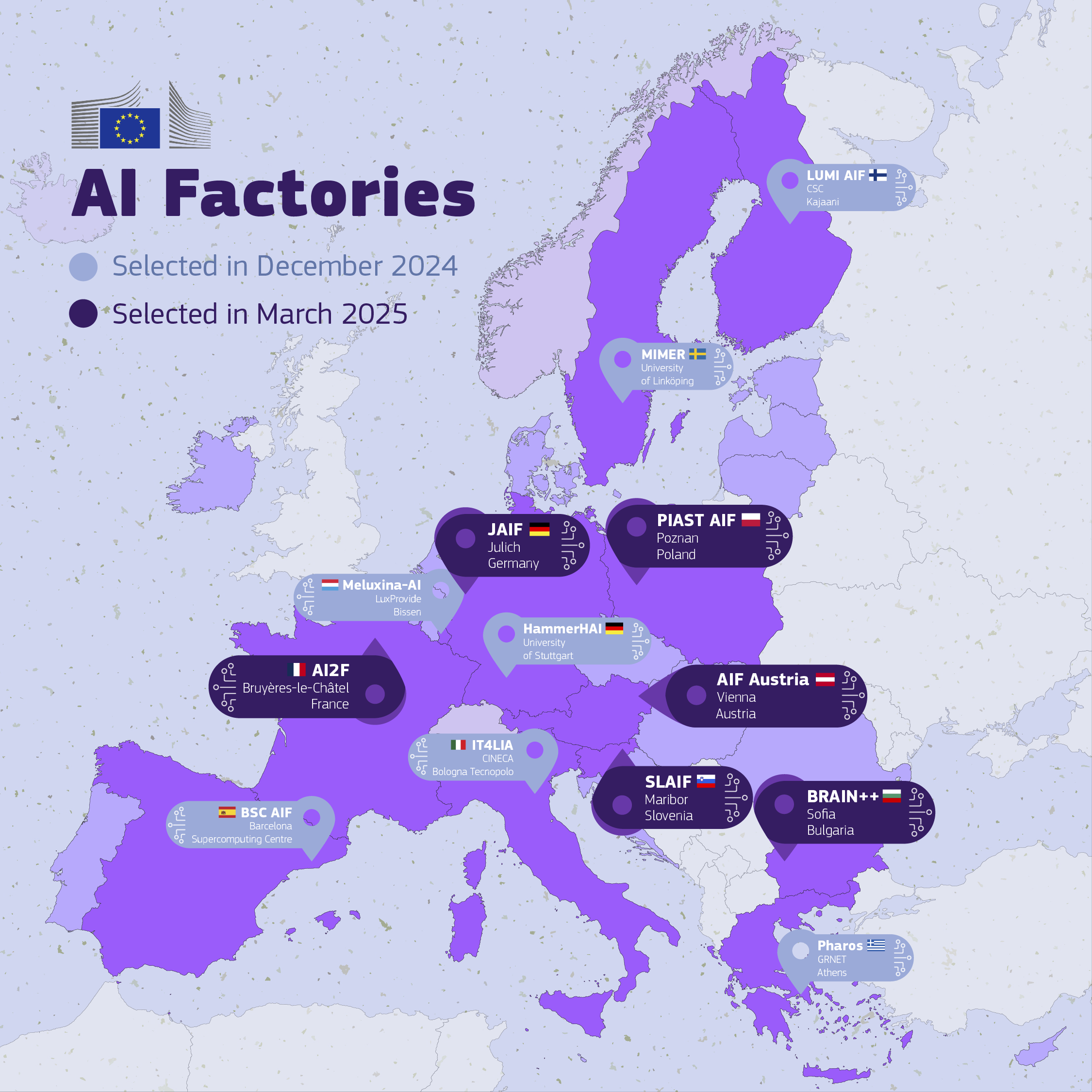Brussels – Today (April 9), the European Commission presented a plan to become a world leader in artificial intelligence. It is an ambitious goal, considering the list of the top thirty AI giants does not include a single European company. However, “it is only partly true that the United States and China are ahead of us,” EU sources claim. Brussels was the first to have a legislative framework, the backbone of which is the AI Act, and can count on “an exceptional talent pool.” Now, it is ready to mobilize up to 20 billion euros to build five cutting-edge Gigafactories, bringing together supercomputers, data labs, users, and developers.
“The race for leadership in AI is far from over,” begins the action plan that Henna Virkkunen, executive vice president of the EU Commission responsible for technology sovereignty, security, and democracy, launched today. Brussels has identified five key pillars on which to base future actions and policies: building a large-scale AI data and computing infrastructure, increasing access to large, high-quality data to train models, developing algorithms and promoting AI adoption in several strategic sectors, strengthening the skills and expertise of European computer scientists, and opening the door to regulatory simplification that can accelerate the path.
The network of European hubs dedicated to AI has already identified its first nodes: the 13 factories selected in December 2024 and March 2025 by the EU Commission, which will benefit from European funding and are expected to be operational by the end of 2026. They include the It4lia AI Factory in Bologna, which was launched with a total investment of about 430 million euros, jointly financed by Italy and the EuroHPC Joint Initiative.

The EU wants to go “one step further” and build the next generation of infrastructure, huge high-performance computing facilities designed to develop and train next-generation AI models and applications.
To understand the scale, consider that – among the 13 AI factories – the most advanced supercomputer is the one designed in Julich, Germany, which boasts some 24 thousand AI processors and should be operational this summer. The Gigafactories should have four times more, equipped with 100,000 AI chips (Elonk Musk, for his xAI, used a huge data center containing about 200 thousand graphics processors to train it).
While AI factories have been half-funded by member states and the European Commission for these “AI monsters,” Brussels also calls the private sector with the European Investment Bank, which could provide a dedicated fund. Until June, the EU executive has opened a window to submit the first interested projects. Then, discussions to establish the fund will continue until the time comes to formulate a legislative act. “We hope that in 2026, as soon as possible, the possibility of building these gigafactories will open up,” said an EU source.
These facilities will have to incorporate big data centers that can power their supercomputers. Within seven years, “our goal is to triple data capacity compared to what we have today,” Virkkunen indicated. The Commission announced that it would propose a cloud and AI development law to stimulate private sector investment in clouds and data centers. In essence, to boost AI use -only 13.5 percent of EU companies use it – Brussels would like to simplify data access for industries and public authorities. Starting with some strategic sectors, such as health, defense, mobility, and energy, aiming to increase its industrial use and full adoption in strategic public and private sectors.
Using data to train AI and copyrights is no minor detail. “It is very important to respect the rights of copyright holders, but at the same time, I would like to encourage them to provide their content for AI training and development,” Virkkunen said. In addition to data access, the EU plans to simplify several regulations to enable the advancement of homegrown AI — even the AI Act itself, regarding reporting requirements and additional administrative burdens for companies. Finally, Virkkunen announced that she would soon begin a tour of the 13 European factories being set up.
English version by the Translation Service of Withub








